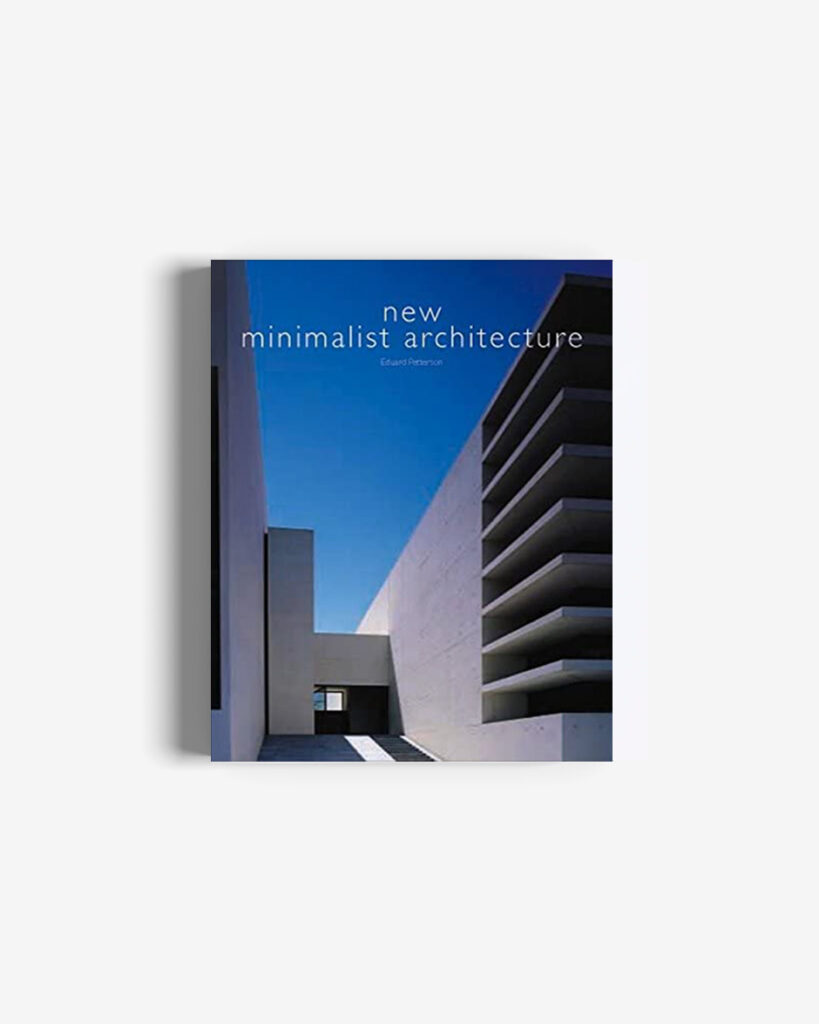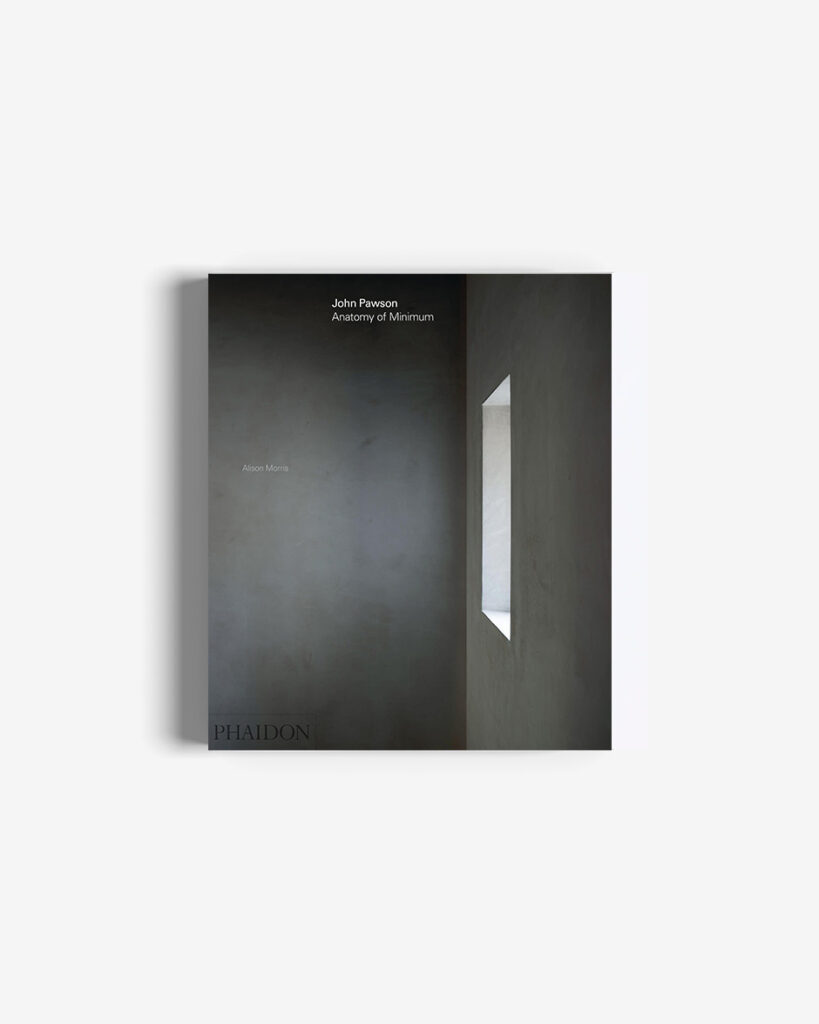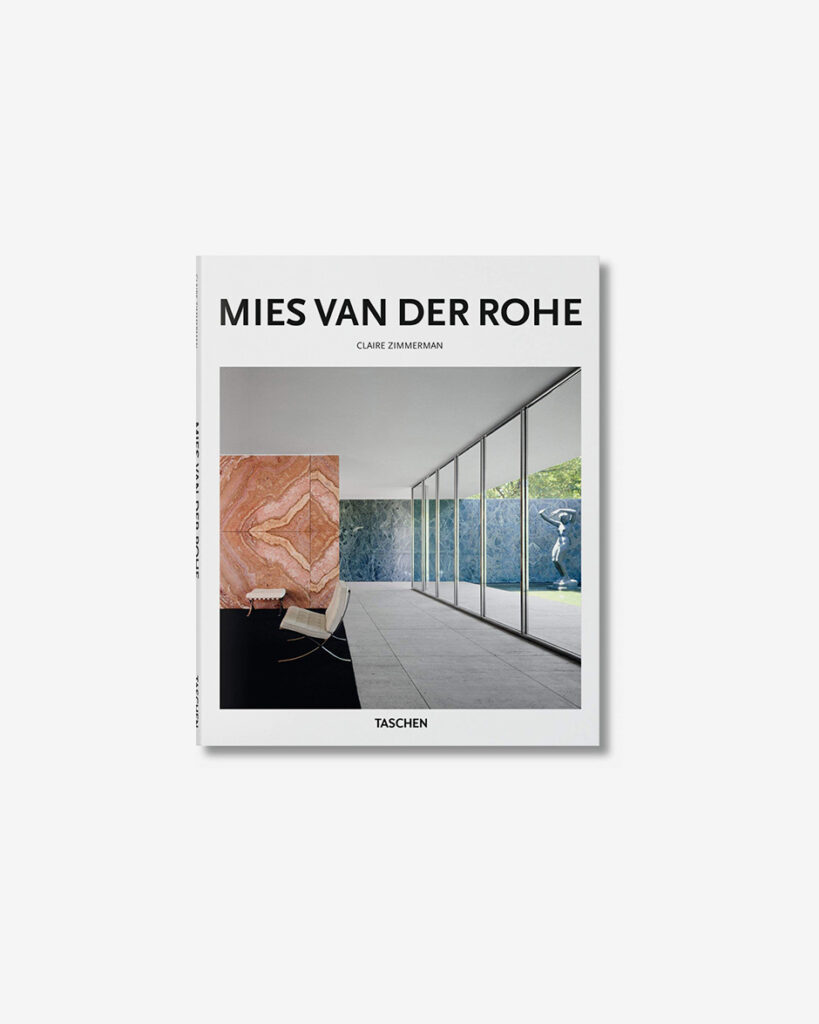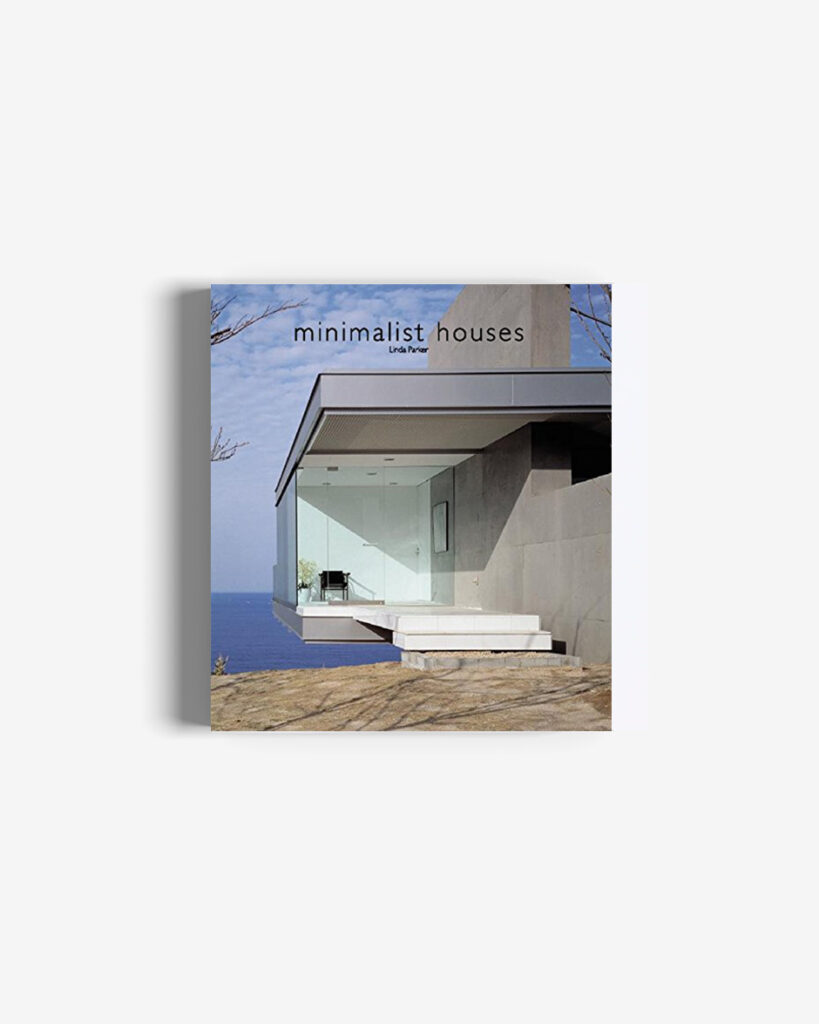Minimalist architecture is a topic that is often controversial – while some people appreciate it, others find it cool, impersonal, and lifeless. Characteristics of minimalist architecture are its clean lines and simple shapes. This style is often associated with mid-century modern design but can be found in many different styles. In this article, we would like to examine the history of minimalist architecture and highlight some of its key features.
Origins
To learn more about the history of minimalist architecture, we must look to the early 20th century, a time when the Bauhaus and De Stijl movements had their beginnings. These movements emerged in response to the growing complexity of architecture and design at that time. The Industrial Revolution brought fundamental changes to all aspects of life, including new materials and more innovative construction methods. Against this backdrop, members of the movements were looking for a new, simplified, and clean aesthetic.
De Stijl, a Dutch group of artists, sought to reduce art and design by using geometric shapes and primary colors while omitting unnecessary details. Influential Dutch architect Gerrit Rietveld for example was among the best-known members of De Stijl and designed the so-called Rietveld-Schröder House in 1924 – an early example of minimalist architecture.
The Bauhaus School, founded by Walter Gropius in Germany in 1919, had a tremendous impact on various fields of design and art and also had a lasting influence on architecture. The Bauhaus motto “form follows function” became a central principle in design and also architecture. The focus was on the practical utility of buildings, while elaborate ornamentation and decoration were avoided. Today, the simple and straightforward Bauhaus aesthetic is emblematic of minimalist architecture.
When the Bauhaus was forced to close in 1933 under pressure from the Nazi regime, many of its members moved to the United States. There, the Bauhaus philosophy continued to find favor under the name “International Style.” Ludwig Mies van der Rohe had a massive influence on U.S. architecture. His famous principle, “Less is more,” remains a core principle of minimalist design today.
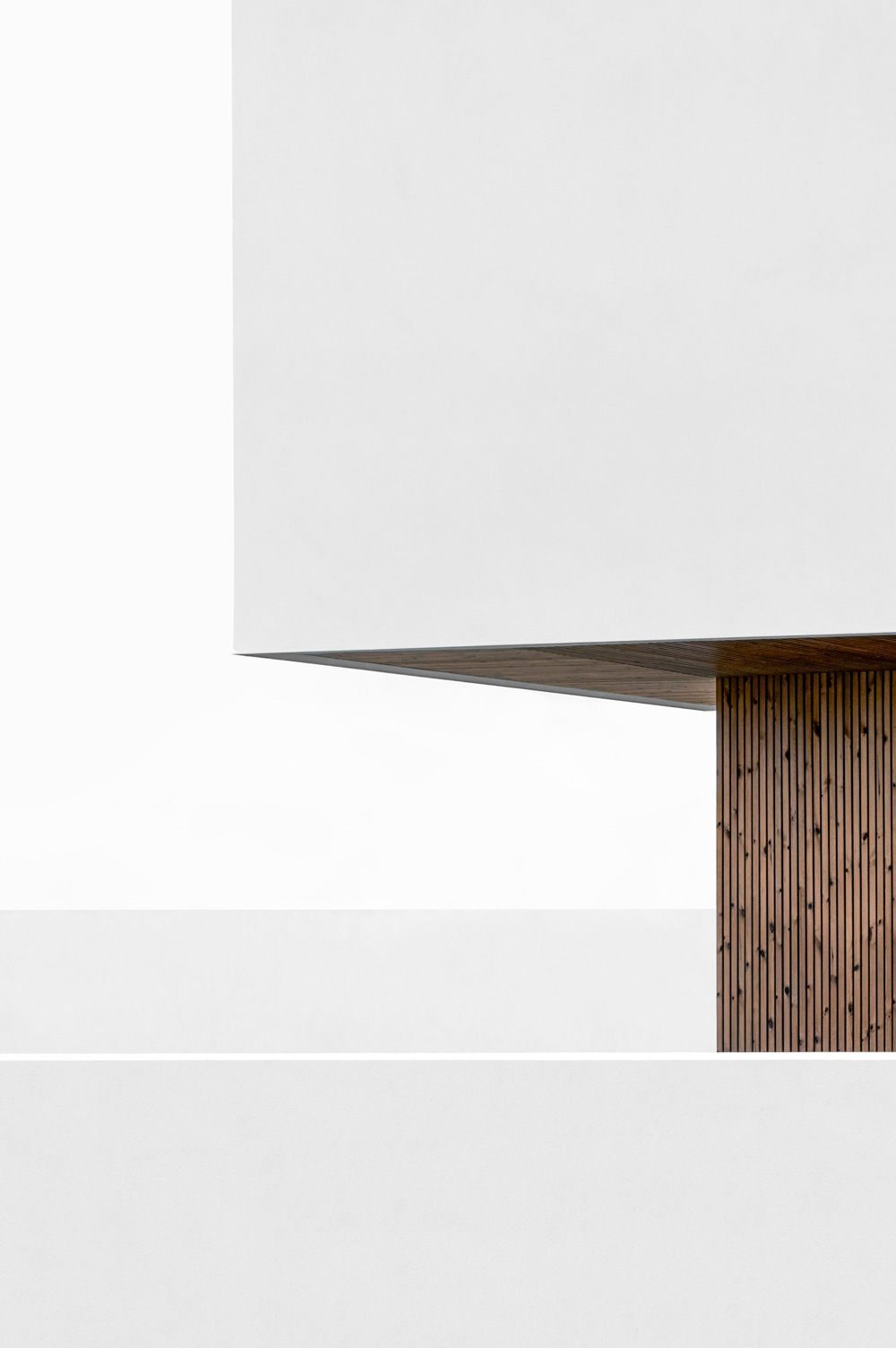
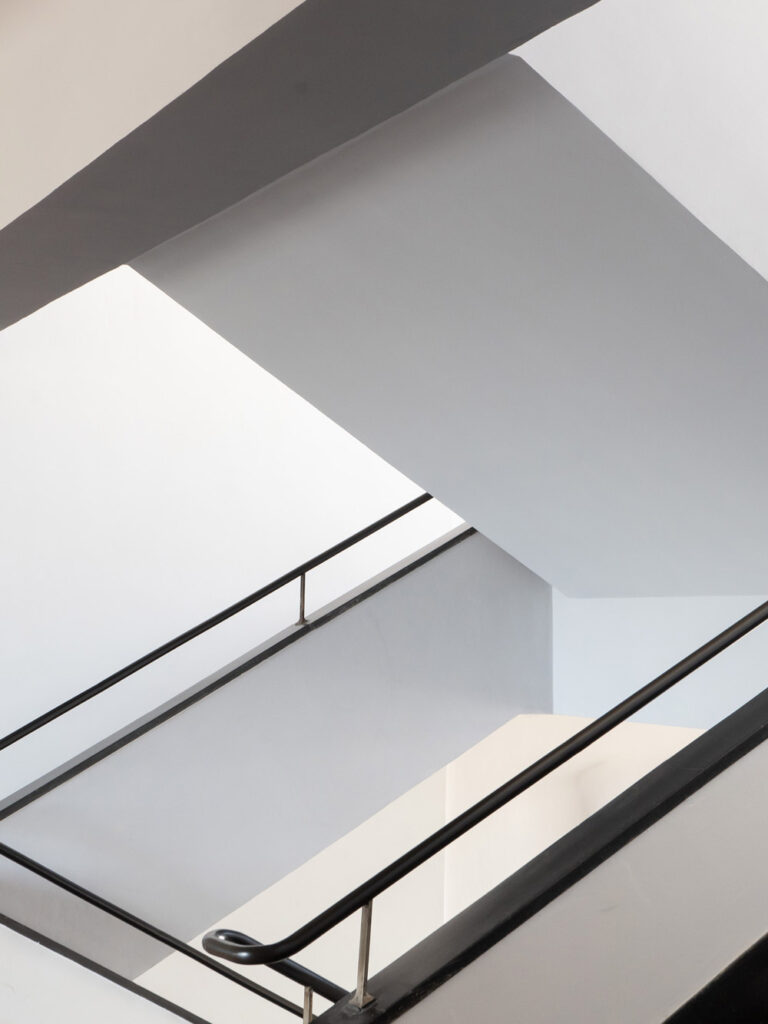
© Photography by Sarah Dorweiler
Less is more.
Quote on Minimalist Architecture by Mies van der Rohe
Another important influence on minimalist architecture comes from traditional Japanese design. For centuries, Japanese architecture has been characterized by simplicity, clean lines, and a close relationship with nature. With a preference for aesthetics and simple objects, traditional Japanese design was considered the perfect source of inspiration for minimalism.
If you want to learn more about how minimalism evolved in art, we recommend the following article: Exploring Minimalist Art – All You Need To Know
The characteristics of minimalist architecture
Minimalist architecture is focused on creating harmony, balance, functionality, and simplicity. The basic principle follows the maxim “form follows function“. This means that the design of buildings and spaces is based on their function and purpose. Consequently, only the necessary elements are used, each of which should serve a specific purpose. This approach leads to a reduction of decorations, which in turn produces clear, uncluttered designs.
Natural materials, such as wood, stone, glass, and metal serve as a base. These materials exude simplicity and tranquility, bringing nature into the focus of the design. Likewise, calm, neutral colors such as white, gray, black, and tan are a fundamental characteristic of minimalist designs. They create a subtle and harmonious visual effect and support the clean lines of the building structure.
Another very obvious characteristic of minimalist architecture is the geometric shapes and repetitive lines. This gives clarity and order to the designs and emphasizes the functionality and simplicity of the design. By eliminating superfluous decorations, these basic shapes and lines are emphasized even more, and the architectural structure comes to the fore.
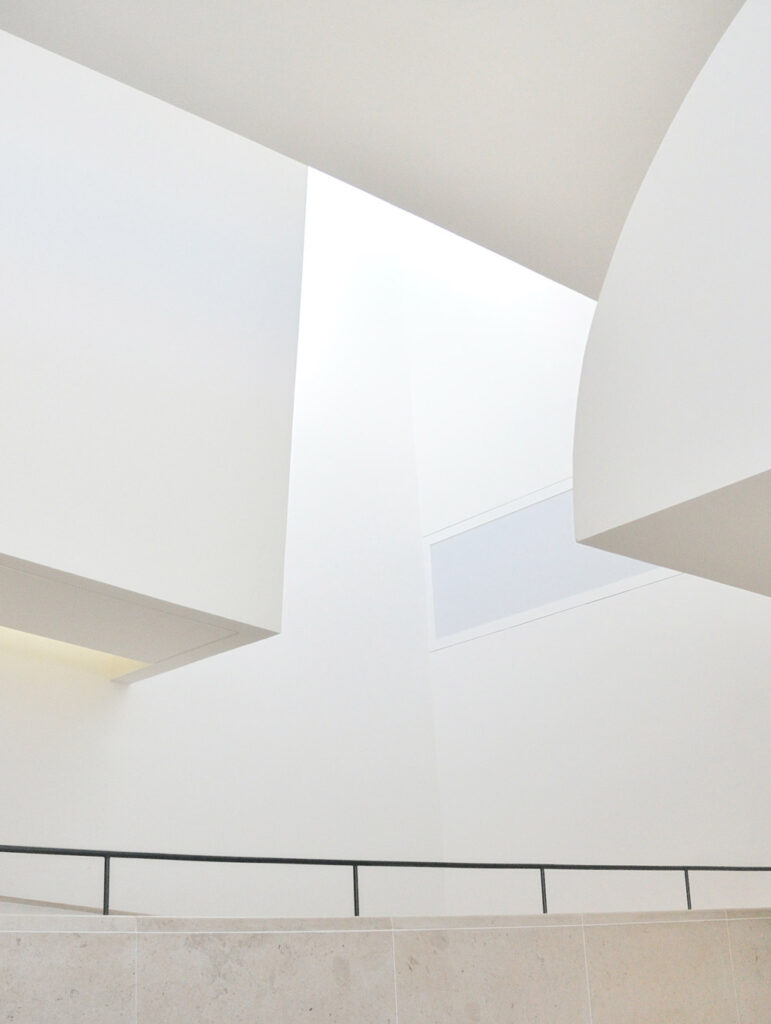
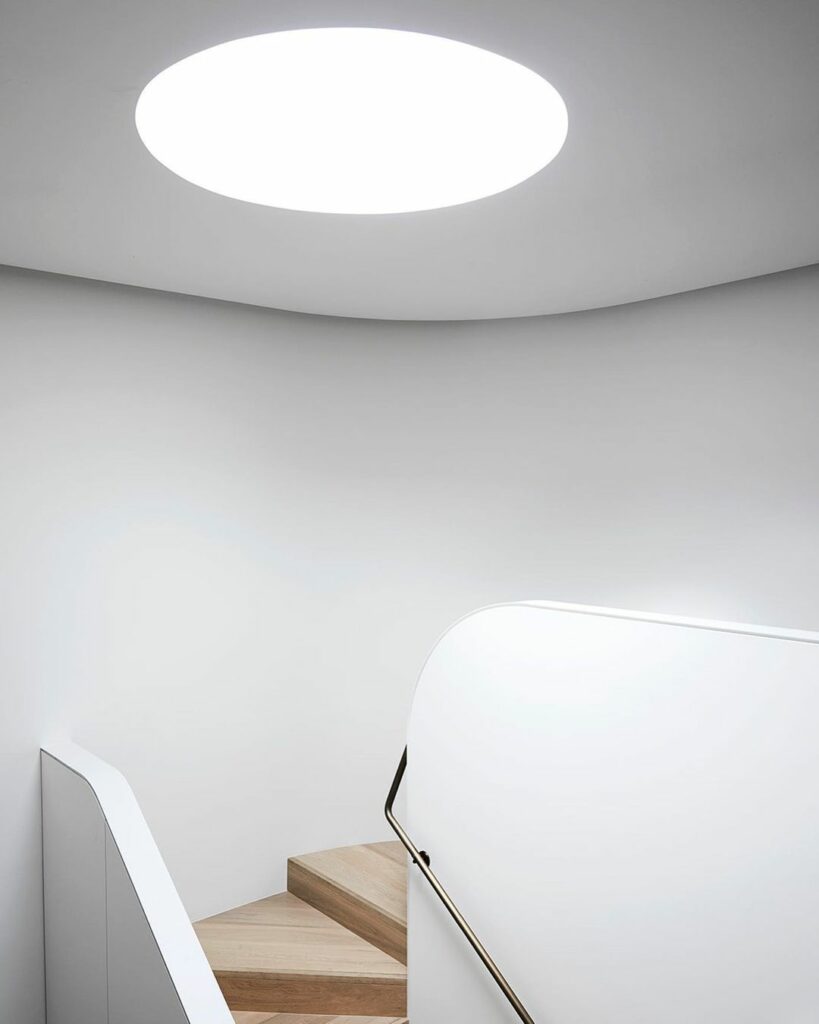
Pioneers of their time: Ludwig Mies van der Rohe, Le Corbusier, and Philip Johnson
The development of minimalist architecture is closely associated with the names of some of the great architects of the 20th century, including Le Corbusier, Mies van der Rohe, and Philip Johnson. These pioneers left a profound impact and laid the foundations for an aesthetic that continues to this day.
The Swiss-French architect Le Corbusier, whose name was actually Charles-Édouard Jeanneret, was one of the first to embrace simplicity in architecture. His designs, such as the Villa Savoye (which he designed with his cousin Pierre Jeanneret) and the Chapel Notre Dame du Haut, are characterized by clean lines, geometric shapes, and a reduced formal language. A pioneer of the modernist style, Le Corbusier introduced the world to a new form of residential culture that turned away from the elaborate designs of the past.
German architect Ludwig Mies van der Rohe took minimalism one step further: Through his experiences as the director of the Bauhaus School, he developed his own unique architectural language, characterized by clear, pared-down structures, great openness, and the use of cutting-edge materials.
Mies’ designs, such as the famous Barcelona Pavilion in Spain and the Farnsworth House in the USA, impressed generations of architects and are today considered masterpieces of minimalist architecture. Deeply inspired by his work was Philip Johnson. Johnson’s buildings are characterized by open floor plans that provide space for light and natural materials.
Today, numerous internationally renowned architects continue to embrace the minimalist aesthetic and are dedicated to creating contemporary buildings that embrace the essence of the 20th-century pioneers and think it further. Tadao Ando, John Pawson, David Chipperfield, Vincent Van Duysen, Fran Silvestre Architects, and Peter Zumthor are among the best-known representatives of this direction.
Favorite books* on minimalist architecture
So what makes minimalist architecture so special?
Minimalism in architecture means the harmonious combination of structure and nature, focusing on aesthetics, form, and function. It’s not just about reducing things to the bare minimum, but rather achieving an aesthetic balance by emphasizing the essentials and highlighting the beauty of simplicity and harmony. It is a counter to the increasingly complex world and reminds us how calming and inspiring a space can be when simplicity takes center stage. And in our eyes, that’s exactly what makes it so special and timeless.
Further Reading
- https://en.wikipedia.org/wiki/Minimalism
- https://www.designingbuildings.co.uk/wiki/Minimalist_architecture
*Affiliate Links: If you purchase something through one of the links, Aesence may receive an affiliate commission. You won’t have any extra costs, but you’ll support Aesence.
